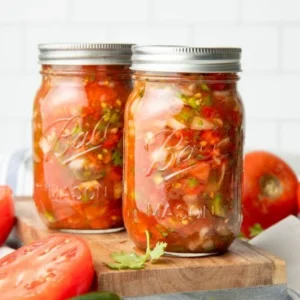Bay scallops are bite-sized treasures from the sea, beloved for their sweet, delicate flavor and tender texture. Unlike their larger sea scallop cousins, bay scallops cook quickly, making them ideal for weeknight dinners or elegant seafood starters. These versatile mollusks shine in everything from buttery sautés to creamy pastas and baked gratins. With roots in coastal American and Mediterranean cuisines, bay scallops are a staple in seafood-loving households for good reason — they’re quick to cook and full of refined flavor.
Ingredients
Here’s what you’ll need for a classic garlic butter bay scallop recipe:
-
1 lb bay scallops (fresh or thawed if frozen)
-
2 tbsp unsalted butter
-
1 tbsp olive oil
-
3 cloves garlic, minced
-
1 tbsp lemon juice
-
¼ cup dry white wine (or low-sodium broth)
-
Salt and black pepper, to taste
-
2 tbsp fresh parsley, chopped
-
Lemon wedges, for serving
Substitutions:
-
Use vegan butter and omit wine for a dairy-free, alcohol-free version.
-
Swap garlic for shallots for a milder taste.
-
For gluten-free versions, ensure broth and seasonings are certified gluten-free.
Step-by-Step Cooking Instructions



Step 1: Prep the Scallops
-
Pat scallops dry with paper towels to ensure a good sear.
-
Season lightly with salt and pepper.
Step 2: Heat the Pan
-
Heat olive oil and butter in a large skillet over medium-high heat.
-
Once sizzling, add the scallops in a single layer (avoid overcrowding).
Step 3: Sear the Scallops
-
Cook undisturbed for 1.5–2 minutes until golden brown on one side.
-
Flip and cook for another 1–2 minutes until opaque and just firm.
Step 4: Add Flavor
-
Add minced garlic and cook for 30 seconds (don’t brown it).
-
Deglaze with white wine and lemon juice, scraping up any bits from the pan.
-
Let it simmer for 1 minute to form a light sauce.
Step 5: Finish and Serve
-
Turn off heat, sprinkle chopped parsley, and serve hot with lemon wedges.
Avoid This Common Mistake:
Overcooking leads to rubbery scallops — cook just until opaque!
Pro Tips and Cooking Techniques
-
Dry thoroughly before cooking for a golden crust.
-
Cast iron or stainless steel pans work best for searing.
-
Add a pinch of red pepper flakes for a little heat.
-
For deeper flavor, brown the butter before adding scallops.
-
Use a fish spatula to flip scallops gently without tearing them.
Variations and Customizations
-
Pasta Add-In: Toss scallops with angel hair pasta, parmesan, and a splash of cream.
-
Low-Carb Option: Serve with sautéed zucchini noodles or cauliflower rice.
-
Herbed Version: Add fresh thyme or tarragon for an aromatic twist.
-
Asian Fusion: Use sesame oil, soy sauce, and ginger instead of butter and garlic.
-
Gratin Style: Bake scallops in a casserole dish with breadcrumbs and parmesan.
Serving Suggestions
-
Serve over buttered linguine, creamy risotto, or crusty sourdough bread.
-
Garnish with microgreens or a lemon zest sprinkle.
-
Pair with a crisp white wine like Sauvignon Blanc or Pinot Grigio.
-
Complement with sides like steamed asparagus, green beans, or arugula salad.
Nutritional Information (Per Serving ~4 oz)
-
Calories: 180
-
Protein: 22g
-
Carbohydrates: 2g
-
Fats: 9g
-
Fiber: 0g
-
Cholesterol: 35mg
-
Sodium: 280mg
Note: Values may vary depending on substitutions and exact ingredients.
Frequently Asked Questions (FAQs)
Q: Can I use frozen bay scallops?
Yes! Just thaw them overnight in the fridge and pat them dry thoroughly before cooking.
Q: How do I store leftover scallops?
Store in an airtight container in the fridge for up to 2 days. Reheat gently on low heat to avoid overcooking.
Q: Can I grill bay scallops?
Yes, but use a grill basket or skewers to prevent them from falling through the grates.
Q: Are bay scallops the same as sea scallops?
No. Bay scallops are smaller, sweeter, and cook faster than sea scallops.
Closing Thoughts
Bay scallop recipes are the perfect blend of simplicity and elegance. Whether you’re whipping up a romantic dinner or a fast weekday meal, these tiny treasures always impress. Don’t be afraid to get creative with flavors and pairings! Try this recipe, share your twist, and let us know how it turned out — happy cooking!



